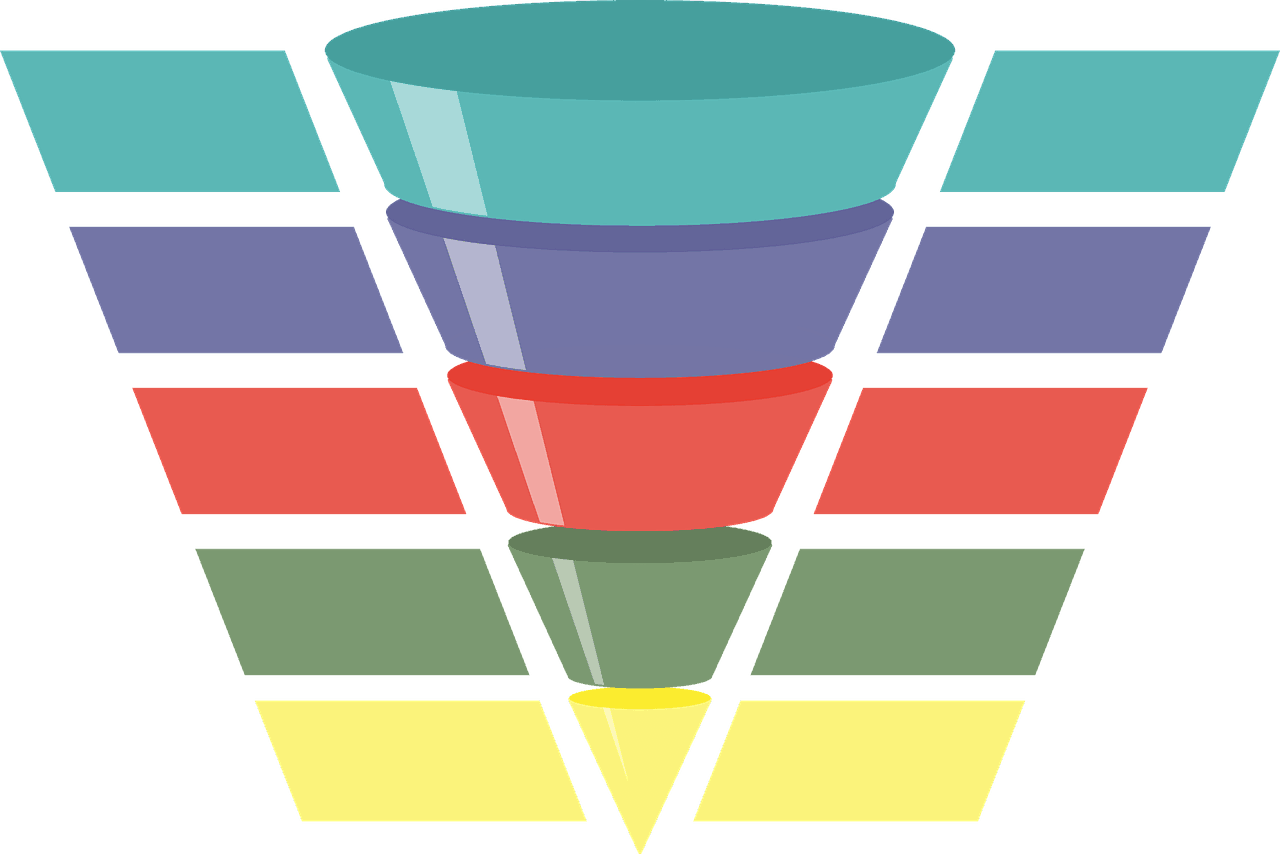Struggling to implement a marketing strategy or create a solid plan to follow? If so, it’s time to look at your marketing funnel.
Throughout your buyer’s journey you’ll find leaks that need to be dealt with, in order to improve your marketing processes. By creating a smooth consistent marketing funnel, your increase the value of your marketing department and better understand your target audience.
Understanding the Marketing Funnel
To begin, you should be able to grasp the concept of the marketing funnel and be able to see how it applies to your marketing strategy. At the very top of the funnel we have the broadest audience that we try to grab and place in our funnel. This is the coldest end of the funnel so the likelihood that they could be interested in your product is mixed.
As we head further down the funnel the chances of a conversion increase with each stage. The buyer starts to become more invested with time and eventually has so much desire for the product that they part with their cash and buy!
Once the buyer has gone through the funnel, it’s argued you can then put them back through the funnel and interest them in your other services.
What is a funnel?
The funnel concept was first associated with the buyer’s journey in ‘Bond Salesmanship’ by William W. Townsend in 1924. A marketing funnel top to bottom represents a potential customer becoming aware of the product at the top and becoming a paying customer right at the bottom.
What is AIDA?
The AIDA model was identified by American businessman E. St Elmo Lewis in 1898. It shows the common process for purchasing a product.
Attract Attention
This is done through marketing materials and advertising to create brand awareness and to let people know that your product exists. At this top stage of the funnel, the audience is very broad and has the most amount of leaks.
Maintain Interest
A slightly narrower stage, you can enter more detail with the buyer as their interest has been piqued. List the benefits of your product and features that your buyer might be further interested in hearing.
Create Desire
This is the tipping point of the buyer’s journey, creating limited time offers or discounts on the product will inspire action from the buyer.
Take Action
This is the action, conversion or purchase as a result of the first 3 stages of the marketing funnel. After this stage we can place the buyer back through the funnel marketing.
Digital Transformation of the Funnel
Compared to traditional marketing, digital marketing has brought new marketing channels, platforms, and buyer actions. Marketing campaigns can now be targeted from the outset; saving you more of ad spend and supplying more qualified leads.
There’s also analytical software such as Google Analytics that give you accurate tracking and data on you campaigns to ensure you’re on track for success. Having these web tools at your fingertips, coupled with how buyers use the internet, call for a totally different strategy to that of traditional methods.
What could be sabotaging your conversions?
Throughout the funnel you’ll lose potential customers due to a range of factors. Let’s look at how your conversions could be affected by a leaky funnel. Depending on your marketing channels, you may want to focus on optimising each individual channel at a time. For example, if you’re driving traffic to your business using paid advertising, you can look at your Ads account and streamline your keywords and focus on bringing down your cost per click.
If you use other promotional materials, look at how users have been interacting with it, find sticking points and improve. To find the cause of people leaving your funnel, there should be a comprehensive overview of your current marketing strategy, plan, and every contact point your leads have with your business – then you’ll be able to see what affects your conversion rates.

